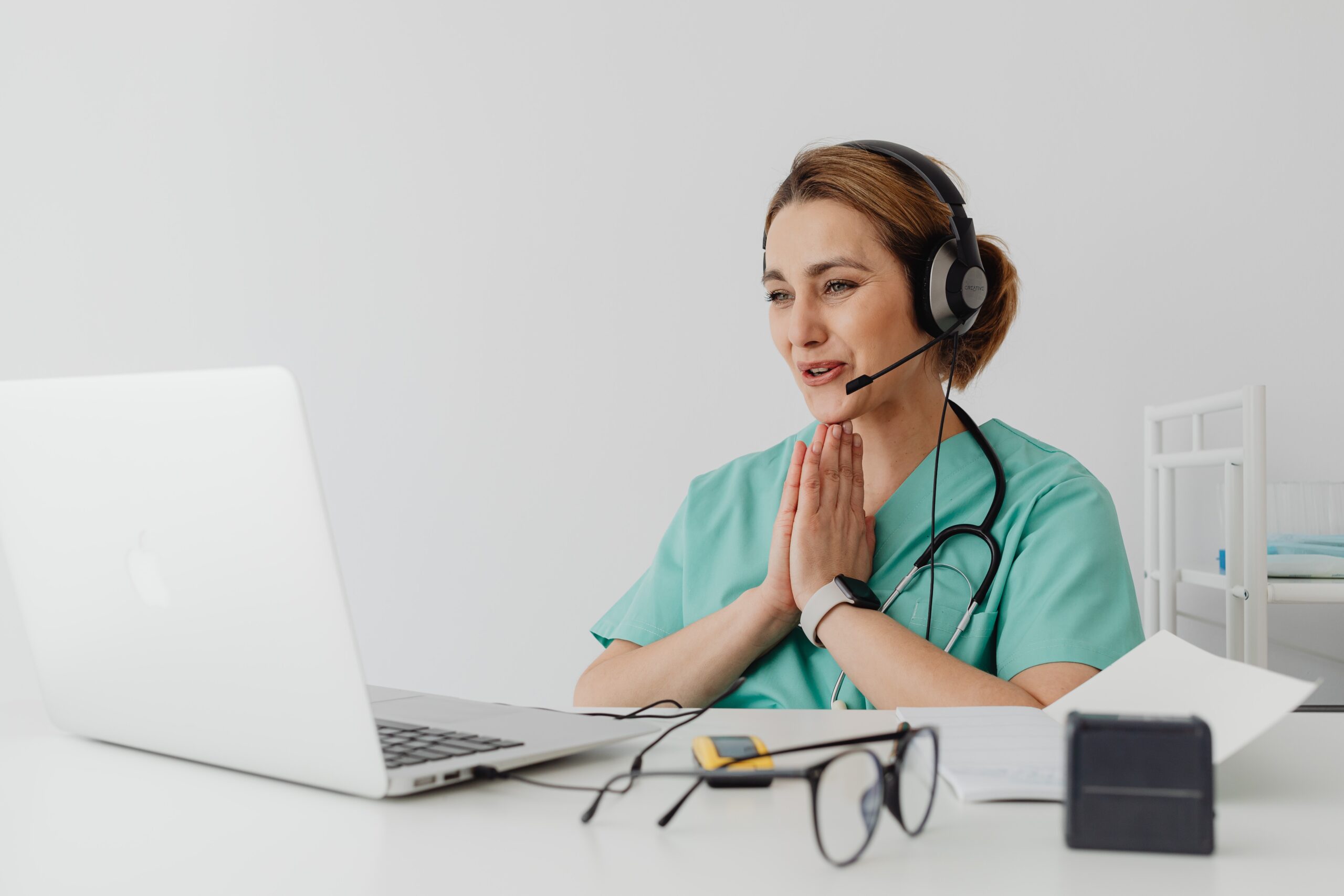Research on remote medical diagnosis, based on non-contact detection of patients’ vital signs, through the use of thermographic image analysis.
Technological developments, as well as the COVID-19 pandemic and the need for remote medical diagnostics that resulted from it, have significantly boosted the development of telemedicine. Measuring vital signs or analyzing sleep on a watch and phone, no longer surprises anyone and is often part of everyday life. The use of artificial intelligence and machine learning is also having an increasingly significant impact on medical solutions (1). What opportunities does technology currently offer us for non-contact medical diagnostics?
Analysis of thermographic images
One path of telemedicine is the analysis of thermograms, i.e. images registering the emission of thermal radiation. Such an image is produced without exposing the object to an external light source. Medical applications of this type of imaging include analysis of the frequency and evenness of breathing, the occurrence of coughing, inflammation or diagnosis of cardiovascular diseases, among others. The application of machine learning to analyze thermograms and use them for medical diagnosis is the topic of Dr. Alicja Kwasniewska research.
Such analysis of images also makes it possible to discover parameters relating to heart rate, movement, or body temperature. A challenge for thermography is the detection of specific body parts, for example, the face, due to the heat flow between objects, and thus the high blurring and low contrast of features present in thermographic images (2). Algorithms to detect such objects are very important because specific parts of the human body, mainly the face, can provide a great deal of information about a person’s well-being and health and form the basis of remote diagnostics using image processing methods. The face for example is detected when analyzing the occurrence of coughing. So far, alternative solutions for cough detection are based primarily on sound analysis, which can be disturbed by the environment.
In her research, Dr. Alicja Kwasniewska described, among other things, models that help increase the resolution of thermographic sequences and improve the accuracy of respiration rate detection (2). Dr. Alicja Kwasniewska’s original methods showed that image enhancement based on spliced networks with high resolution receiving fields can be used in the analysis of vital signs at a distance, without the introduction of more expensive sensors, from images with a resolution of only a few pixels. In addition, the research included the first attempt to use attention-based RefSR in vital signs estimation, a technique that allows significant texture elements to be transferred between images from different domains to reconstruct components important in assessing temperature variation in facial areas (2).
Telemedicine potentials and challenges
Telemedicine, depending on which phenomenon it is based on, faces different opportunities and challenges. Thermographic analysis focuses on non-contact detection of vital signs, which can be used, for example, in drones to monitor people in hard-to-reach places, or at airports at border crossings. The challenge for this branch is still to ensure the quality of the data, and thus the efficiency of the analysis.
Continuous analysis of vital signs makes it possible to quickly make an accurate diagnosis and apply the appropriate treatment. Contactless medical care also opens up tremendous opportunities for elderly care.
Another important aspect is the privacy of stored data and the speed of response of systems for diagnosis. SiMa.ai is meeting these issues by developing a “specialized edge platform,” which allows all calculations to be performed locally, with minimal power consumption. In the case of thermography, identifying individuals is much more difficult, but the aspect of protecting medical data is very important in telemedicine.
Remote diagnostics – the future of medicine?
The development of remote medical diagnostics solutions that we can observe in recent years may seem very promising. The combination of classical medicine with non-contact analysis of the patient’s vital signs makes it possible to answer many of the problems that currently exist and increase the effectiveness of the therapies undertaken. We encourage you to read more related sources on the topic:
1. A.Kwaśniewska, ”COVID-19 Accelerates the Adoption of Machine Learning at the Edge in Healthcare”, accessed: 10.08.2022, https://sima.ai/covid-19-accelerates-the-adoption-of-machine-learning-at-the-edge-in-healthcare/
2. A. Kwasniewska, M. Szankin, J. Ruminski, A. Sarah and D. Gamba, “Improving Accuracy of Respiratory Rate Estimation by Restoring High Resolution Features with Transformers and Recursive Convolutional Models,” 2021 IEEE/CVF Conference on Computer Vision and Pattern Recognition Workshops (CVPRW), 2021, pp. 3852-3862, doi: 10.1109/CVPRW53098.2021.00427.
3 .A. Kwaśniewska, J. Rumiński and P. Rad, “Deep features class activation map for thermal face detection and tracking,” 2017 10th International Conference on Human System Interactions (HSI), 2017, pp. 41-47, doi: 10.1109/HSI.2017.8004993.
4 M. Szankin, A. Kwasniewska, N. Glowacka, J. Ruminski, R. Nicolas and D. Gamba, “Fully Automated AI-powered Contactless Cough Detection based on Pixel Value Dynamics Occurring within Facial Regions,” 2021 14th International Conference on Human System Interaction (HSI), 2021, pp. 1-7, doi: 10.1109/HSI52170.2021.9538788.
5. M. Szankin, A. Kwasniewska, “Exploring Deep Learning Face Recognition with Thermal Images”, https://www.edge-ai-vision.com/2020/01/exploring-deep-learning-face-recognition-with-thermal-images/, access: 10.08.2022
Alicja Kwaśniewska, Joanna Rancew


